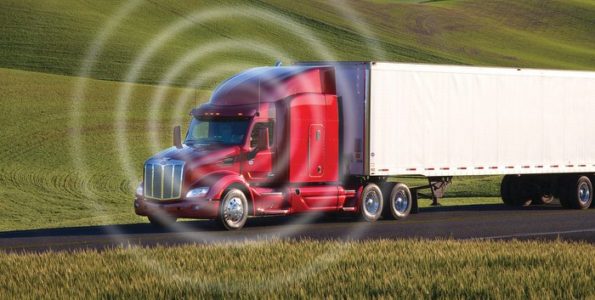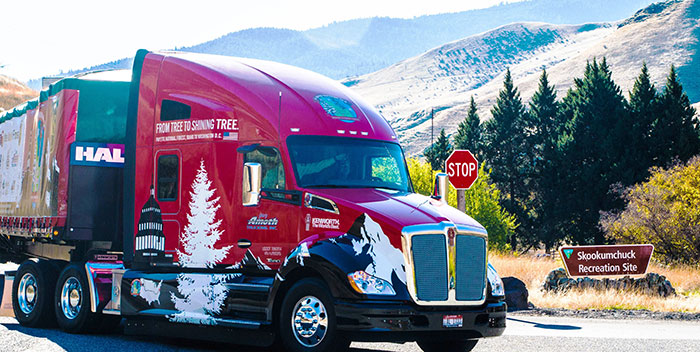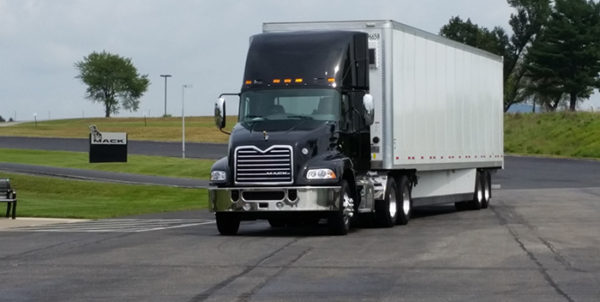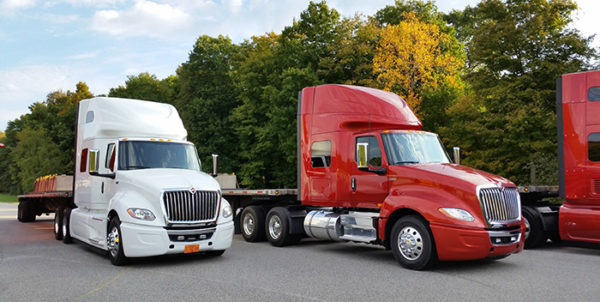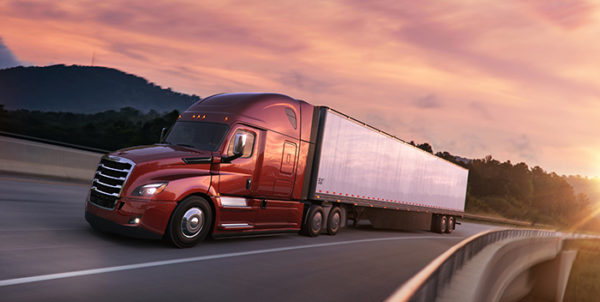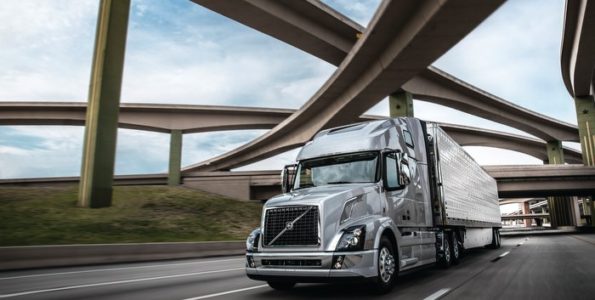Uptime, fuel efficiency and safety remain top goals for fleets as they strive to make better, more informed decisions that will have a positive impact on their operations.
“As they look for the insight needed to achieve those goals,” begins Greg Treinen, sales and marketing manager of connectivity at Daimler Trucks North America (DTNA), “fleets are just now beginning to understand the amount of performance data being generated by their vehicles and the fact that it can now be transmitted to them using a connectivity platform installed on their trucks.”
At a high level, connected vehicle technologies are about data that improves decision-making, notes Terry Kline, senior vice president and chief information officer at Navistar. “That started out with the use of telematics data to assure improved uptime and other related benefits,” he says. “For example, solutions already help avoid potential operational problems that could lead to safety or liability issues, improve driver productivity and retention, enhance fuel efficiency and increase uptime.
“As more types of data are becoming available, even more opportunities are opening up,” Kline continues. “Connected vehicle technologies can potentially help fleets streamline logistics on matters ranging from the availability of loads to the best travel routes given weather patterns, to the performance of secondary equipment on their vehicles such as real-time data on whether a refrigeration unit is maintaining ice cream at an optimal temperature.”
In early 2016, Kenworth introduced its remote diagnostics solutions for Class 8 customers. “TruckTech+ is a breakthrough in how fleets monitor the health of their trucks on the road,” says Jason Skoog, Kenworth’s assistant general manager for sales and marketing.
Currently, new Kenworth Class 8 trucks are equipped with Kenworth TruckTech+ Remote Diagnostics, which enables fleets to view real-time vehicle health in the PACCAR Solutions portal. The system is now operational in more than 28,000 trucks equipped with PACCAR MX-13 or MX-11 engines.
In late 2016, the Kenworth TruckTech+ Remote Diagnostics and the PACCAR Solutions engine maintenance management program were utilized by the PACCAR Customer Center to support Gary Amoth Trucking when it delivered the U.S. Capitol Christmas tree. For the journey, the Customer Center monitored the health of the truck hauling the tree along its 4,000-mile journey.
“Leveraging the telematics capabilities that are available through the PACCAR MX-13 engine enables us to continuously monitor fleets in real time,” explains Laura Bloch, assistant general manager of operations at PACCAR Parts. “This technology helps maximize uptime and makes sure the load arrives at its destination safely and on-time.”
Peterbilt Motors Co. has introduced enhancements to its SmartLinq remote diagnostics platform, as well as expanded availability to all Class 8 truck engines. SmartLinq provides real-time information on fleet health, with detailed diagnostics and recommended actions, through the web-based PACCAR Solutions portal. Nearly 20,000 trucks are already equipped with SmartLinq and that number is expanding now that the system is standard on all Peterbilt heavy-duty trucks.
“SmartLinq is providing greater uptime, as well as cost savings and improved fleet management,” says Darrin Siver, a Peterbilt general manager and PACCAR vice president. “Reasoning engine technology, in particular is one of the latest innovations added to our connected truck solutions.”
Described by Scott Newhouse, Peterbilt’s chief engineer, as a “collective knowledge approach to truck diagnostics and repair,” reasoning engine technology collects and analyzes information generated by the on-board diagnostics on a SmartLinq-enabled truck. “It utilizes machine learning to make associations between triggered diagnostic codes so we can provide the most efficient diagnostic procedures and get trucks back on the road faster,” he says.
Driving development
David Pardue, Mack Trucks’ vice president of connected vehicle and uptime services, says that customer requirements for improved productivity, increased uptime and compliance with new regulations are driving the development of connected vehicles by the OEM.
“Mack’s solutions are built on our fully integrated GuardDog Connect telematics platform,” Pardue relates. “Mack Fleet Management Services, built off our factory-installed telematics hardware, also offers an array of software and technology to enhance operational performance for fleets.”
At Volvo Trucks, Volvo Remote Diagnostics is factory installed, eliminating the need for additional hardware. “Fleets can take advantage of Volvo’s Fleet Management options to help improve productivity in their operations, including the demand for increased uptime,” says Conal Deedy, director of connected vehicle services for Volvo Trucks. “These options are provided by best-in-class providers and utilize Volvo’s fully integrated Remote Diagnostics hardware.”
At Navistar, reports Terry Kline, the company’s OnCommand Connection telematics solution’s open-architecture approach captures telematics data from all makes of trucks in real time. “Many fleets use multiple makes of vehicles, each of which typically has its own telematics provider, so that can be a challenge,” he explains. “There’s a real need to bring all the data together and make it more actionable on a fleet-wide basis.”
More than 250,000 vehicles are already using OnCommand Connection, including more than 60% that are not International truck or IC bus models. The solution currently aggregates data from 20 telematics service providers and presents it to fleets in a web-based dashboard.
OnCommand Connection captures about 4,000 fault codes, along with other data, as a way to track and measure vehicle health and performance metrics such as fuel economy, geo-location, idle time, and potential failures.
“We’re continuing to build on this foundation of connected services,” Kline reports. “In August 2015, we announced plans for Over-the-Air Programming, a remote engine reprogramming solution using a secure Wi-Fi connection. Over-the-Air Programming also lays the groundwork for a pipeline of connected vehicle services, such as partner engine and component calibration and body control module updates, as well as future cellular capabilities.
“We’re also providing hardware that supports our expanded range of connected services,” Kline continues. “OnCommand Link is a universal device operating on an open platform. A light version of the device supports basic OnCommand Connection, over-the-air and electronic logging device functionality, and a premium option will support expanded reporting and advanced features, such as the ability to program parameters and set critical values like speed limiters.
“The open-architecture approach used by the OnCommand Link device will allow telematics service providers, other hardware providers and developers of third-party applications to participate in an open marketplace of products,” Kline adds. “That delivers value because it gives fleets choices that help them get the most from their investments in assets without excessive cost or contract obligations.”
The Daimler Trucks North America (DTNA) product delivering connected vehicle services is Detroit Connect. The solution employs three main features, including Virtual Technician remote diagnostics, Remote Updates over-the-air programming capabilities and Analytics fuel efficiency and safety insights.
“Uptime is a key benefit of Detroit Connect Remote Updates,” Greg Treinen says. “When it becomes available in the summer of 2017, Remote Updates will utilize the connectivity platform developed for the new Freightliner Cascadia to give fleets the ability to remotely change select engine parameters, such as maximum road speed, as well as to receive Detroit-initiated engine and other powertrain firmware updates. Remote Updates improves uptime by reducing the need to stop and physically connect the vehicle at a service center.
“Detroit Connect Analytics provides on-demand, automated fuel efficiency and safety analyses and reports featuring key insights from Detroit and Daimler Trucks North America engineers,” Treinen continues. “Available to fleets in the first half of 2017, Detroit Connect Analytics uses that expertise to quickly identify behaviors, trends and root causes of fuel consumption and safety performance.
“The ability to unlock and understand what’s happening with the truck and use that knowledge to make adjustments is a significant time and performance advantage,” Treinen adds. “It allows customers to spend less time crunching data and more time optimizing vehicle performance.”
Thorough training
Manufacturers are also providing training so connected vehicle solutions can be utilized effectively. “With the proliferation of connected vehicle services that have multiple touch points throughout a fleet’s or a dealer’s organization, it is imperative that training is developed for each of these stakeholders so they fully understand how to get the most out of these services,” says Greg Treinen.
“Since most of our services will be delivered through our Detroit Connect portal, much of our training development has centered around utilizing that interface,” Treinen continues. “We have developed a series of videos targeted at different users of the portal, as well as a live ‘out-of-box experience’ walk-through that users can utilize to go through each area of the portal.”
Detroit is also developing a web-based training series targeted at select users. “As over-the-air programming capabilities begin to roll out in 2017, we will be developing training materials targeted specifically toward the driver and what their role is in accepting a firmware update,” Treinen adds. “Webinars and in-person training visits are a key part of the training effort as well.”
David Pardue at Mack Trucks says the OEM offers training programs for GuardDog Connect-related services. “We provide training materials for drivers, fleet managers and other customer personnel,” he relates. “Training for our Fleet Management Services is provided by our partners. Thorough training is a key factor in delivering the right mix of technology and people through our uptime solutions.”
Volvo Trucks’ Conal Deedy notes that the manufacturer offers training modules for its Remote Diagnostics program to personnel delivering the service and has training and literature available for drivers and fleet managers. For Volvo’s Fleet Management options, partners such as Telogis and Omnitracs provide training and support for their services.
At Navistar, notes Terry Kline, a series of 11 short videos explaining the features and use of OnCommand Connection is being made available. “One goal of creating a seamless environment for users of connected services was to provide an intuitive experience that requires minimal training,” he explains.
“For example,” Kline continues, “we tested our over-the-air programming process with non-technicians, people who have never updated an engine calibration or diagnosed a problem in a truck. Using their own smartphones, with help only from a single-page quick reference guide, each of the test subjects was able to complete a calibration update within the average time.”
Next-gen technologies
While a host of new connected vehicle technologies are already in place, manufacturers also have their sights set on the future. “Next-gen technologies, such as advanced safety systems, V2V and V2I communications, automation and so on, will require additional capabilities regarding connectivity,” says Mack’s Pardue.
“It is clear that more connectivity demands are coming to all vehicles including heavy-duty trucks,” Volvo’s Deedy adds. “Technologies such as enhanced safety systems, automation, and more will all require more robust communications.”
DTNA’s Treinen notes that capabilities such as improved integration with dealer back-end service systems for better communication, enhanced navigation, driver performance coaching, and video capture capabilities are being investigated by the OEM. “With remote diagnostics and the introduction of over-the-air programming capabilities, we are really just beginning to scratch the surface of what can be done by OEMs with vehicle connectivity,” he says.
In the not too distant future, predicts Navistar’s Kline, connected vehicle solutions will address an even wider range of issues, including driver support, logistics enhancements that will optimize fleet utilization, as well as safety and efficiency. The uses will also likely extend to optimization of vehicle selection by using telematics data and analytics capabilities to study usage patterns and determine the right vehicles to meet a fleet’s needs.
“We’re building additional capabilities in analytics and application development,” Kline adds, “and we’ll continue to deliver new applications that help customers improve their operational efficiencies and productivity.”

